#hexb
Explore tagged Tumblr posts
Text
10 Extremely Rare Plots in Python that You should Know

The Fascinating World of Rare Plots Data visualization plays a crucial role in data analysis, enabling us to make sense of complex information and identify patterns and trends. By presenting data in a visual format, we can explore and interpret it more effectively, leading to valuable insights and informed decision-making. One area of data visualization that has gained significant attention is rare plots. These visually captivating representations allow us to uncover hidden insights and outliers within datasets that may otherwise go unnoticed. Rare plots offer a unique perspective on data, highlighting rare occurrences, anomalies, and extreme values that hold immense value in various fields, from finance to healthcare and beyond. In this article, we will explore the allure of rare plots and delve into their importance in uncovering hidden insights. Through detailed examples and analysis, we will showcase how rare plots can enhance our understanding of data and facilitate informed decision-making. So, let’s embark on this fascinating journey into the world of rare plots and discover their remarkable potential. https://rahularaj.com/how-to-do-exploratory-data-analysis-eda-in-python-with-7-easy-steps/ Scatterplot Transformations: Beyond Linear Relationships Scatterplot transformations offer a powerful way to visualize and explore relationships that go beyond linear trends. These transformations help uncover exponential relationships, handle dense data points, and examine cyclic and directional patterns. Let’s delve into three common scatterplot transformations: 1. Logarithmic Scatterplots: Unveiling Exponential Relationships Logarithmic scatterplots are used when the relationship between variables follows an exponential pattern. By taking the logarithm of one or both variables, the plot compresses the data, making it easier to discern patterns in the exponential relationship. When plotting data on a logarithmic scale, the x-axis and/or y-axis represent the logarithm of the original values. This transformation allows for a more accurate representation of the data, especially when there is a wide range of values. import matplotlib.pyplot as plt import numpy as np # Generate sample data x = np.linspace(1, 10, 100) y = np.exp(x) plt.scatter(x, y) plt.xscale('log') plt.yscale('log') plt.title('Logarithmic Scatterplot') plt.xlabel('Log(X)') plt.ylabel('Log(Y)') plt.show()

2. Hexbin Scatterplots: Visualizing Dense Data Points Hexbin scatterplots are especially useful when dealing with large datasets containing many overlapping data points. Instead of displaying individual data points, hexbin scatterplots divide the plot area into hexagonal bins and assign a color or shading to represent the density of points within each bin. This visualization technique helps to identify regions of high density and reveal underlying patterns that might be obscured with traditional scatterplots. Hexbin scatterplots are particularly effective for visualizing spatial data or when working with datasets that contain a high degree of overlap and clustering. import matplotlib.pyplot as plt import numpy as np x = np.random.randn(10000) y = np.random.randn(10000) plt.hexbin(x, y, gridsize=30, cmap='Blues') cb = plt.colorbar(label='Density') plt.xlabel('X') plt.ylabel('Y') plt.title('Hexbin Scatterplot') plt.show()

3. Polar Scatterplots: Exploring Cyclic Patterns and Directional Relationships Polar scatterplots are best suited for data that exhibits cyclical patterns or relationships with a directional component. By plotting data in polar coordinates, each data point corresponds to a specific angle and distance from the origin. This transformation allows for a clear visual representation of the cyclic or directional relationships. It is particularly useful when analyzing data such as wind directions, seasons, or circular patterns. By utilizing scatterplot transformations such as logarithmic scatterplots, hexbin scatterplots, and polar scatterplots, data analysts can gain deeper insights and uncover valuable patterns that may not be apparent with traditional linear scatterplots. import matplotlib.pyplot as plt import numpy as np r = np.random.rand(100) theta = 2 * np.pi * r plt.subplot(111, polar=True) plt.scatter(theta, r) plt.title('Polar Scatterplot') plt.show()

Violin Plots: Unveiling Distributions and Multimodal Data Violin plots are powerful visualizations that provide insights into the distribution of data and reveal multimodal patterns. They combine the characteristics of box plots and kernel density plots to effectively convey information about the data’s central tendency, spread, and skewness. 1. Understanding the Anatomy of Violin Plots A violin plot consists of several elements: - Violin Body: The main component of a violin plot is the “body,” which represents the distribution of the data. It is symmetrical along the vertical axis and possesses variable width. The width of the violin represents the density of data points at different values. Wider sections indicate areas of higher data density, while narrower sections indicate areas of lower density. - Kernel Density Plot: Violin plots often contain a kernel density plot inside the violin body. This plot provides a smooth estimate of the distribution of the data. The peaks of the kernel density plot indicate modes in the data distribution. - Box Plot: A box plot is typically superimposed on the violin body. It displays the quartiles (25th, 50th, and 75th percentiles) as a rectangular box, with a line or symbol inside representing the median. The whiskers extend from the box to the minimum and maximum values within a certain range. - Outliers: Outliers, if present, are demonstrated as individual points beyond the whiskers of the box plot. They indicate data points that are significantly different from the rest of the distribution. 2. Using Violin Plots to Compare Distributions across Different Groups or Categories One of the primary applications of violin plots is the comparison of distributions across different groups or categories. Violin plots allow quick visualization and comparison of the shapes and spreads of various data distributions. By plotting multiple violin plots together, you can observe how the distributions differ across different groups. This visual comparison helps identify any differences in medians, spreads, skewness, or multimodality between the groups. 3. Visualizing the Combination of Violin and Scatterplots for Rich Insights To gain richer insights, violin plots can be combined with scatterplots. This combination enables the display of individual data points within each category or group, adding granularity to the distribution visualization. By incorporating scatterplots into violin plots, you can visualize the relationship between individual data points and the overall distribution. This allows you to observe specific data patterns within each category or group, identify potential outliers, and detect associations that may not be apparent in the distribution alone. In conclusion, violin plots are powerful tools for understanding distributions and revealing multimodal patterns in data. They provide a comprehensive visualization of data distributions while allowing for comparison across groups and the integration of individual data points through scatterplots. Adding violin plots to your visual analytics toolkit can enhance your ability to uncover meaningful insights and patterns in your data. import seaborn as sns import matplotlib.pyplot as plt # Sample data tips = sns.load_dataset("tips") sns.violinplot(x="day", y="total_bill", data=tips) plt.title('Violin Plot of Total Bill by Day') plt.show()

Sankey Diagrams: Mapping Flow and Relationships Sankey diagrams are powerful visual tools that represent the flow and relationships between different entities or concepts. These diagrams often utilize arrows or lines with varying thicknesses to depict the magnitude of the flow. They are popularly used in various fields to analyze complex systems and visualize data in a clear and concise manner. In this section, we will explore the structure and components of Sankey diagrams, their applications in analyzing energy flow, migration patterns, and more, and how they are used in real-world scenarios like business and public policy. 1. Exploring the Structure and Components of Sankey Diagrams Sankey diagrams consist of several fundamental components: - Nodes: Nodes in a Sankey diagram represent entities or categories. They can be anything from energy sources and destinations to countries or products. - Flows: Flows visually represent the magnitude of the relationship or transition between nodes. The thickness of the flow is proportional to the quantity being represented, such as energy flow or migration numbers. Flows can also be directional, indicating the movement from one node to another. - Labels: Labels provide additional information about the nodes and flows, such as the specific value or percentage represented by a flow or the name of the node. - Colors: Colors are used to differentiate nodes and flows, making it easier to identify and understand the relationships between different entities. Understanding the structure and components of a Sankey diagram is crucial to correctly interpreting and analyzing the information presented. 2. Using Sankey Diagrams to Analyze Energy Flow, Migration Patterns, and More Sankey diagrams have diverse applications across various fields. They are particularly useful in analyzing complex systems with multiple interconnected components. Here are some popular applications of Sankey diagrams: a. Energy Flow Analysis: Sankey diagrams are commonly used to visualize energy flow and consumption patterns in different sectors. They can represent the transformation of energy from different sources, such as fossil fuels, renewable energy, and electricity, to end-use sectors like transportation, residential, and industrial. b. Migration Patterns: Sankey diagrams can depict migration flows between different regions or countries. They help visualize the movement of people, the origin, and destination regions, and the volume of migration. c. Material Flow Analysis: Sankey diagrams are also used to analyze material flows in industrial processes. They provide insights into the sources, uses, and losses of different materials, helping identify opportunities for resource optimization and waste reduction. d. Water Distribution: Sankey diagrams aid in understanding and managing water distribution systems. They illustrate the flow of water from sources such as rivers or reservoirs to end-users like households, industries, and agriculture. e. Data Visualization: Sankey diagrams are employed to represent complex data in a visually appealing and easy-to-understand format. They are widely used in data visualization projects to display relationships and connections between different data points. 3. Real-World Applications of Sankey Diagrams in Business and Public Policy Sankey diagrams have practical applications in various real-world scenarios, including business and public policy: a. Supply Chain Analysis: Businesses utilize Sankey diagrams to analyze supply chains, mapping the flow of materials, resources, and information. This helps identify bottlenecks, optimize processes, and reduce waste. b. Environmental Impact Assessment: Sankey diagrams are used to assess the environmental impact of manufacturing processes, transportation systems, or energy production. They provide a comprehensive view of resource usage, emissions, and waste generation, aiding in the development of sustainable strategies and policies. c. Urban Planning: Sankey diagrams assist urban planners in understanding and optimizing the flow of resources and services within cities. They provide insights into energy consumption, transportation patterns, and waste management, contributing to the development of sustainable urban environments. d. Policy Development: Sankey diagrams are employed by policymakers to visualize complex policy issues, facilitating data-driven decision-making. They help understand the effects of policies on different sectors and identify potential trade-offs or opportunities. Sankey diagrams offer a versatile visualization tool that can be applied to numerous scenarios across various domains. By enabling a comprehensive understanding of flow and relationships, they facilitate informed decision-making and enhance communication of complex concepts or data. import plotly.graph_objects as go fig = go.Figure(data=, color="blue" ), link=dict( source=, # indices correspond to labels, eg A, B, A, C target=, value= ))]) fig.update_layout(title_text="Basic Sankey Diagram", font_size=10) fig.show()

Joy Plots: Capturing Changes and Variability Over Time Joy plots are a visualization technique that offers a unique representation of data trends and variations over time. By depicting the density of multiple data distributions, joy plots provide a clearer understanding of how variables change and fluctuate across different time periods. This article will explore the concept of joy plots, their applications, and their usefulness in various domains. 1. Introduction to Joy Plots and their Unique Visual Representation Joy plots, also known as ridgeline plots, display the density of a variable along the y-axis against time or another continuous variable on the x-axis. These plots enable the visualization of changes in data distribution and allow for the comparison of different data sets. By stacking the densities of multiple variables, joy plots provide a comprehensive visual representation of the variability and patterns in the data. The uniqueness of joy plots lies in their ability to show the density curves in close proximity, making it easier to identify shifts in distribution and explore the overall trends. Rather than using traditional line plots or bar charts, joy plots offer a more intuitive and compact depiction of data changes over time. 2. Analyzing Trends and Variations using Joy Plots Joy plots excel in capturing and analyzing trends and variations in data. The overlapping density curves in a joy plot provide insights into the distribution pattern and enable the identification of different modes or peaks. By observing the changes in these peaks over time, analysts can infer shifts in the underlying data distributions. Furthermore, joy plots allow for the exploration of within-group variations and between-group comparisons. The varying width of the density curves represents the spread or variability in the data at different time points. By comparing the widths of different distributions, analysts can assess the relative levels of variability across different periods. 3. Applying Joy Plots in Various Domains, such as Finance and Climate Data Analysis Joy plots find applications in various domains, including finance, climate data analysis, and many others. In finance, joy plots can be used to analyze stock prices, portfolio performance, or market trends. By visualizing the density of stock prices or returns over time, analysts can spot periods of high volatility, identify market trends, and assess the performance of different assets or portfolios. In climate data analysis, joy plots can help examine variables like temperature, precipitation, or sea-level rise. By plotting the density of these variables along time, scientists can analyze the changes in climate patterns, detect anomalies, and investigate long-term trends. These are just a few examples of the wide-ranging applications of joy plots. With their ability to capture changes and variability over time, joy plots are a valuable tool for analyzing data and gaining deeper insights in various fields.import pandas as pd import matplotlib.pyplot as plt from joypy import joyplot # Sample data: Temperature distributions for different months data = { 'Month': * 10, 'Temperature': ( list(np.random.normal(0, 2, size=10)) + list(np.random.normal(1, 2, size=10)) + list(np.random.normal(2, 2, size=10)) + list(np.random.normal(3, 2, size=10)) + list(np.random.normal(4, 2, size=10)) + list(np.random.normal(5, 2, size=10)) + list(np.random.normal(6, 2, size=10)) + list(np.random.normal(7, 2, size=10)) + list(np.random.normal(8, 2, size=10)) + list(np.random.normal(9, 2, size=10)) + list(np.random.normal(10, 2, size=10)) + list(np.random.normal(11, 2, size=10)) ) } df = pd.DataFrame(data) # Creating the Joy Plot fig, axes = joyplot( data=df, by='Month', column='Temperature', figsize=(12, 8), legend=True, alpha=0.6, title='Monthly Temperature Distribution' ) plt.show()

Network Plots: Revealing Complex Relationships Network plots, also known as network graphs or network visualizations, are powerful tools for analyzing and understanding complex relationships in various domains. This article explores the different components of network graphs and their applications in analyzing social networks, web graphs, and co-authorship networks. Additionally, it discusses how network plots can be used for anomaly detection and identifying influential nodes. 1. Introduction to network graphs and their components Network graphs consist of nodes, which represent entities, and edges, which represent the connections or relationships between these entities. The visual representation of a network graph helps to reveal the patterns and structures within the network. Nodes: Nodes in a network graph can represent individuals, organizations, websites, or any other entity of interest. Each node can have attributes such as a name, label, or various other properties. Edges: Edges connect pairs of nodes and represent the relationships or interactions between them. Edges can be directed or undirected, weighted or unweighted, and can have different types or labels. Attributes: Network graphs can also include additional attributes, such as node size, node color, or edge thickness. These attributes can provide further information about the nodes, edges, or their relationships. import networkx as nx import matplotlib.pyplot Read the full article
0 notes
Photo

🍕🍕🍕#slimmingworld #swuk #swdinner #foodoptomising #speedfood #healthyextra #hexa #hexb #healthyeating #weightloss #weightlossjourney (at Bedford, Bedfordshire, United Kingdom) https://www.instagram.com/p/BtCDNanh5m7/?utm_source=ig_tumblr_share&igshid=ykyh95xuz61j
#slimmingworld#swuk#swdinner#foodoptomising#speedfood#healthyextra#hexa#hexb#healthyeating#weightloss#weightlossjourney
1 note
·
View note
Photo

7 Things That Help You To Lose Weight Fast Weight loss for many people seems like a phenomenon shrouded in mystery. . . . . #weightgoals #cambridgediet #slimmingdown #losing #hexb #cambogia #smartpointsww… (at USA) https://www.instagram.com/p/CJ8g8V1sVff/?igshid=60scsgjsqfls
0 notes
Photo

#slimmingworlduk #speedfood #synfree #hexb #lunch #tasty #delicious #yum #loseweightin2018 #motivated #backonplan (at Bootle Strand)
#tasty#backonplan#motivated#hexb#lunch#synfree#speedfood#delicious#yum#loseweightin2018#slimmingworlduk
1 note
·
View note
Photo

Porridge Pancakes filling and ever so tasty. Soak oats in fat free yogurt or quark (ideally overnight as it will double in size) mix in 2 eggs. Fry in small dollops. #synfree #hexb or 6 syns #lowsyns #gillianskitchen https://www.instagram.com/p/BsVRQOLH5w1/?utm_source=ig_tumblr_share&igshid=162ji7sr48dkm
0 notes
Photo
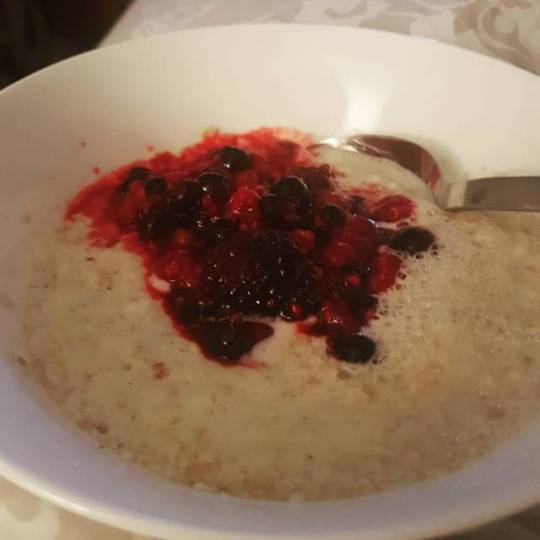
Happy Wednesday #slimmingworld #extraeasy #sw #foodoptimising #fooddiary #healthy #weightlossjourney #weightloss #porridge #berries #hexa #hexb
#foodoptimising#slimmingworld#porridge#fooddiary#healthy#hexa#hexb#extraeasy#weightloss#sw#weightlossjourney#berries
1 note
·
View note
Photo
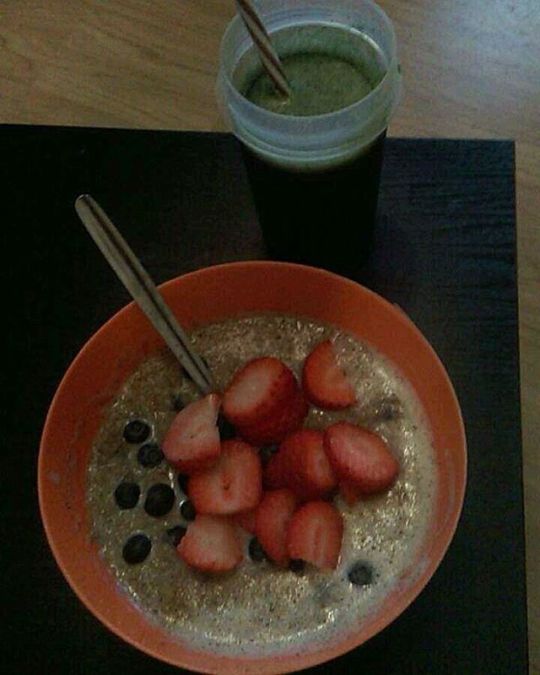
Weetabix #Hexb milk #Hexa with berries #speed and a green smoothie #slimmimgworld #breakfast #breakfastofchampions #smoothies #green
1 note
·
View note
Photo

Totally lost my head at the weekend, wasn't on plan at all but it's Monday so fresh start with a porridge pancake stack xx #hexb #onplan #pancakes #breakfast #slimmingworld #slimmingworldsupport #slimmingworldmember #slimmingworldlife #healthyeating
#slimmingworldlife#slimmingworldsupport#pancakes#slimmingworld#hexb#onplan#slimmingworldmember#breakfast#healthyeating
1 note
·
View note
Photo

Hot choc and the new salted caramel bars (lovely btw, just too small!) #syns #hexb #lowsyn #hotchocolate #treat #dayone #day1 #letsdothis #newmember #group #imagetherapy #support #food #healthyfood #journal #biteitwriteit #inspired #motivated #sw #slimmingworld #onplan #weightloss #fatloss #nowornever #2017ismyyear #bringiton #2017 #ready #coates #whittlesey #eastrea
#eastrea#slimmingworld#bringiton#ready#syns#biteitwriteit#group#letsdothis#support#hexb#day1#treat#lowsyn#nowornever#2017#2017ismyyear#healthyfood#motivated#food#journal#coates#onplan#whittlesey#inspired#sw#weightloss#dayone#newmember#hotchocolate#imagetherapy
1 note
·
View note
Note
hexbugs hexbugs hexbugs hexbugs hexbugs hexb
5 notes
·
View notes
Photo

#rachelweisz #geek https://www.instagram.com/p/CHeKil-HEXB/?igshid=1sl82frucpd3n
1 note
·
View note
Text

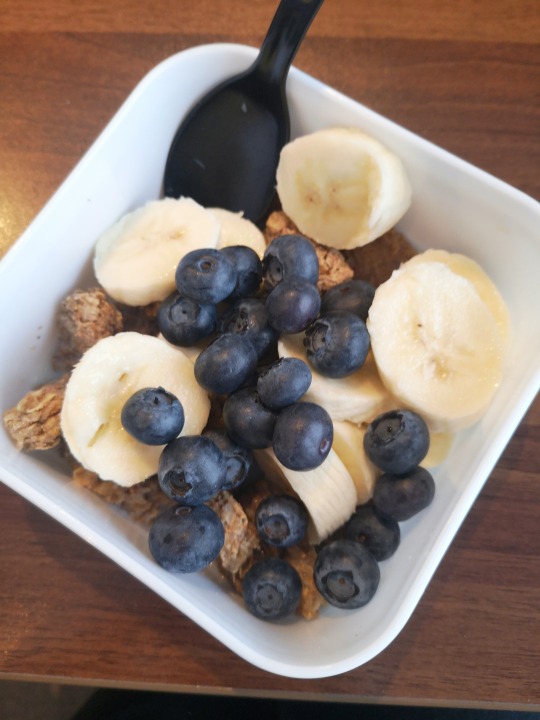
Friday, I'm pleased to see you! 🎉
Having 40g of chocolate weetabix minis (HexB) with some blueberries and a Banana, and I had a coffee this morning before I left the house ��🏻
Anyone have any go-to breakfast ideas that they really like? I'm struggling to do different things, and I want to mix things up 😊
No syns consumed today so far 💪🏻
#Slimming world#Slimming world uk#Slimming world journey#Weight loss#Weight loss journey#Food#Food diary#Slimming world diary#Weight loss journey 2019#Slimming world journey 2019#Food blog#Fitness blog#Lifestyle blog#Wellbeing blog#Meals#Meal prep#Fitness#Lifestyle#Slimmign world life#Healthy#Healthy eating#Slimmign world blog
16 notes
·
View notes
Photo

Tonight’s dinner 🍽 Spinach, kale and broccoli mac and cheese 🤤 🍝 🥦 #slimmingworld #swuk #swdinner #foodoptomising #speedfood #healthyextra #hexa #hexb #healthyeating https://www.instagram.com/p/ByfxZ0YhvNA/?igshid=4scjfqywlmkg
0 notes
Photo
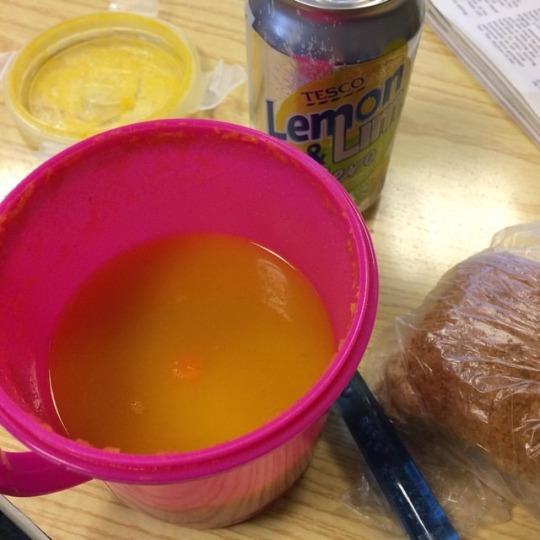
Carrot and ginger soup for lunch #slimmingworlduk #speedfood #synfree #tasty #delicious #yum #lunch #hexb #loseweightin2018 #motivated #backonplan (at Bootle Strand)
#backonplan#motivated#yum#speedfood#tasty#hexb#slimmingworlduk#lunch#synfree#delicious#loseweightin2018
1 note
·
View note
Photo

#PorridgePancakes #synfree #hexb #withberries #gillianskitchen #slimmingworld #overnightoats #homebargains dish https://www.instagram.com/p/BsSei5znruB/?utm_source=ig_tumblr_share&igshid=1rvfqinskrbsn
0 notes
Photo
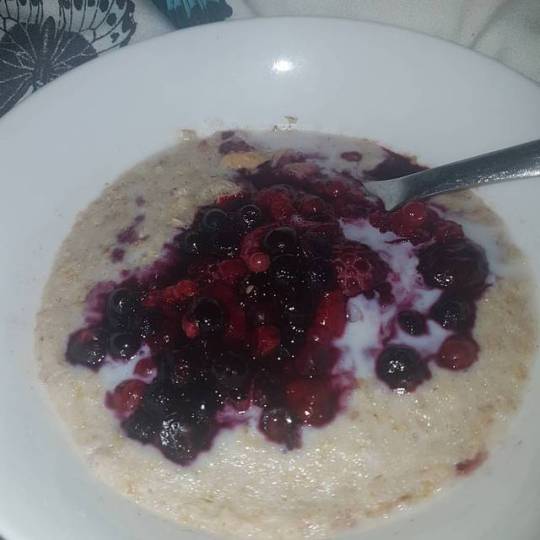
Porridge and frozen berries #slimmingworld #extraeasy #sw #foodoptimising #fooddiary #healthy #weightlossjourney #weightloss #porridge #berries #hexa #hexb
#porridge#weightloss#healthy#hexb#slimmingworld#berries#weightlossjourney#sw#extraeasy#fooddiary#hexa#foodoptimising
1 note
·
View note